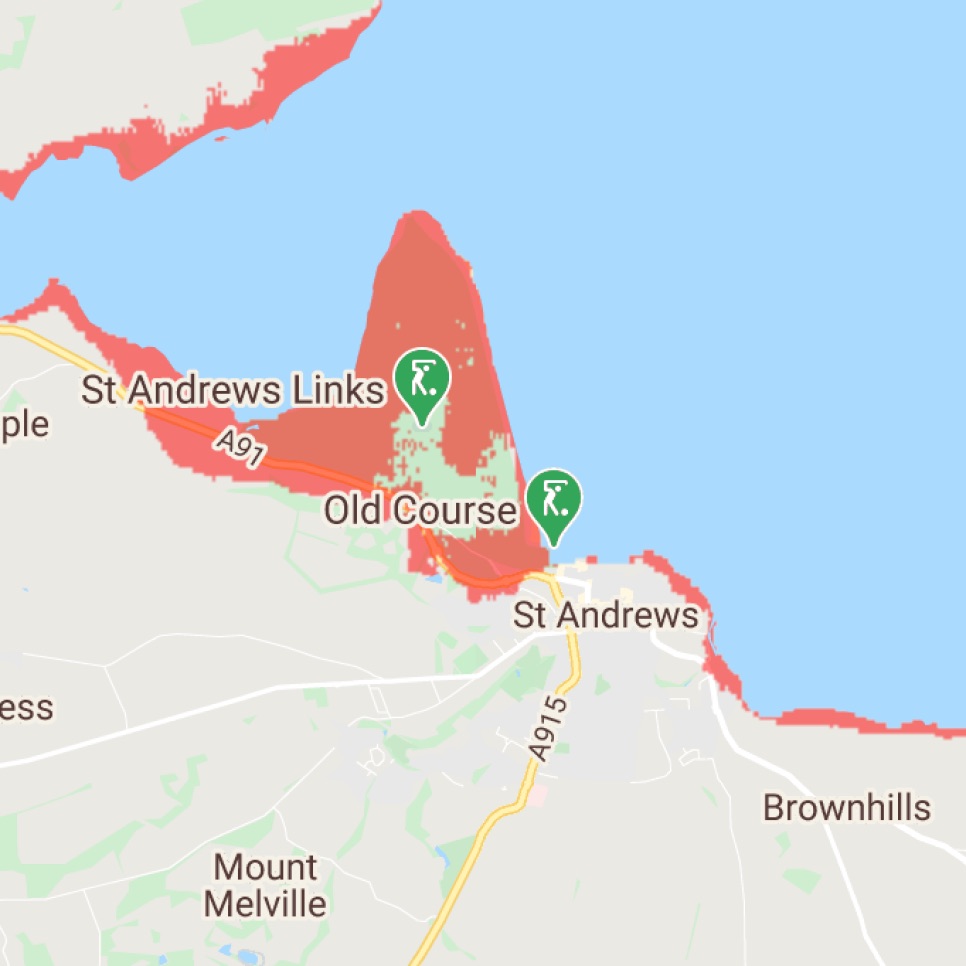The Home of Golf could be underwater as soon as 2050, according to a new climate-change study.
The study, released by Climate Central – an organisation comprised of leading scientists and journalists who study climate change’s impact on society – and analysed by The Herald predicts large swaths of Scotland’s coastline could be submerged due to increased annual flooding and sea level rise. This includes St Andrews Links, located in the town of St Andrews on Scotland’s eastern coastline.

Climate Central published an interactive map to show which areas could be affected. It predicts a widening of the River Clyde, which would impact areas to the west of Glasgow, as well as damage to Dundee, Fife, Stirling and a number of other Scottish metropolitan areas.
St Andrews’ Old Course is one of five Scottish courses in the Open Championship’s 10-course rota. The map also suggests two other Scottish rota courses – Carnoustie and Royal Troon, both located on the coast – could be severely impacted.


“As these maps incorporate big datasets, which always include some error” an explainer on Climate Central’s website reads, “these maps should be regarded as screening tools to identify places that may require deeper investigation of risk.”
This is not the first time Scotland’s coastal golf courses have been included in warnings about rising sea levels. In 2018, the Climate Coalition released a paper called “Game Changer: How climate change is impacting sports in the UK”
“Unchecked, the impacts of climate change could significantly affect the sport over the long term, particularly in Scotland,” the report states, noting that one in six of Scotland’s 600 courses are located on coastline.
The 2018 report used Montrose Links, a course that dates to 1562 and sits on the northeast coast of Scotland, as a case study. The North Sea has crept 70 metres closer to the course in recent years, according to research published by Dundee University.
“As the sea rises and the coast falls away, we’re left with nowhere to go,” Chris Curnin, director of golf at Montrose, is quoted in the report. “Climate change is often seen as tomorrow’s problem, but it’s already eating away at our course.”
The potential impact has drawn the attention of the R&A – the governing body of golf in the United Kingdom, and the organisation that puts on the Open Championship – which started the Golf Course 2030 initiative in 2018. The goal of the project is to “consider the impacts, both positive and negative, of the changing climate, resource constraints and regulation on course condition and playability.”
In January 2020, the R&A pledged £650,000 to various sustainability projects in an attempt to proactively safeguard courses from the effects of climate change. The organisation has also tapped Steve Isaac as its Director of Sustainability.
“The planet’s climate is shifting and we can all expect more extreme conditions and increasingly unpredictable weather patterns in the future,” reads a section on the R&A’s website dubbed “Planning for Climate Change.”
“This will have a major impact on the way golf courses must be managed and it is important to ensure that the management approach at your golf club can cope with whatever the weather throws at it. A sustainable approach to course management offers the best chance of stability in unpredictable times.“

